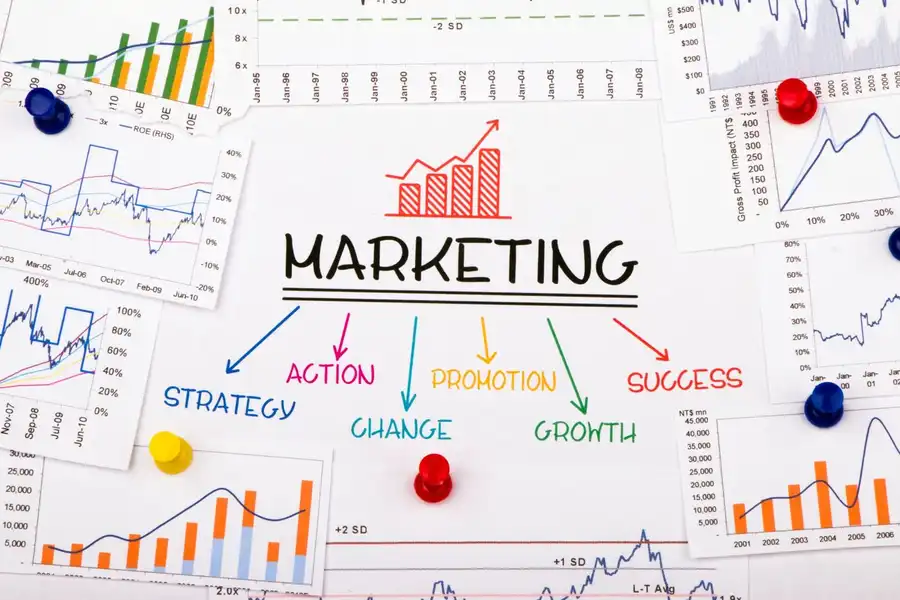What is Growth-Driven Design, and Why is it Important?
Growth-Driven Design is a specific strategy based on the idea that one can launch a minimally viable website (launch pad site) and make ongoing improvements based on real user data and feedback. It offers a dynamic and user-centered approach to website design, allowing businesses to adapt quickly, optimize performance, and continuously improve their online presence.
By focusing on data, user feedback, and iterative improvements, organizations can build websites that better meet the needs of their target audience and drive business growth.
And let’s face it: your website is out there 24/7. It is often the first experience your potential clients have with your organization. You shouldn’t treat it like a print brochure.
Adapting to the Pace of Digital Marketing
The digital world moves at an astonishing pace, with consumer preferences, technology advancements, and market dynamics continuously shifting. Traditional website design (and other digital assets) often fails to keep up with these rapid changes, leading to outdated websites and missed opportunities.
However, with Growth-Driven Design, we can tackle these challenges head-on by adopting an iterative and data-driven approach. By using a launch and expand approach and consistently monitoring and analyzing user behavior, we can make data-informed decisions to optimize our website, landing pages, and digital advertisements so we stay relevant in this ever-changing market.
Embracing Continuous Improvement
Growth-Driven Design embraces the concept of continuous improvement as a fundamental principle. Rather than relying on a one-time website launch, GDD focuses on incremental enhancements over time.
With regular data analysis and testing, businesses can identify high-impact areas for enhancement and implement changes swiftly. This iterative process helps optimize performance, user experience, and website effectiveness.
Putting The Customer Front and Center
Successful digital marketing relies on understanding our target audience and meeting their needs. We can gain insights into user behaviors, preferences, and pain points through user research, heatmaps, and analytics.
Armed with this information, we can create personalized and engaging experiences that resonate with our audiences, fostering stronger connections that lead to increased engagement, higher conversion rates, and improved customer satisfaction.
Fostering a Culture of Collaboration
Growth-Driven Design promotes team collaboration, breaking down silos between marketers, designers, and developers. By embracing an agile approach, these teams work together in sprint cycles to deliver incremental improvements.
This collaborative environment facilitates the exchange of ideas, encourages cross-functional feedback, and accelerates the implementation of enhancements. The result is a website that aligns seamlessly with marketing objectives and delivers a cohesive brand experience.
Focusing on Measurable Results
By setting clear goals, tracking key performance indicators (KPIs), and avoiding vanity metrics, businesses can measure the impact of design and content changes and gauge the effectiveness of their website. This data-driven approach provides valuable insights that can inform future optimizations and drive better results.
Driving Operational Efficiency
Traditional web design often involves large upfront costs and long development cycles. GDD helps mitigate these risks by focusing on smaller, incremental improvements.
This approach allows businesses to allocate resources more effectively, ensuring they invest in features and functionalities that drive results.
Simulating the Benefits
How does spending $5,000 on digital advertising versus $5,000 on a GDD process to increase website conversions play out?
- Simulation Parameters
- 2% – Initial Webpage Conversion Rate (before any changes)
- $100 – Average Order Value
- 10,000 Visitors – Monthly Website Traffic
- 1 Month – Advertising Campaign Duration
- 3 Months – Growth-Driven Design Process Duration
- Scenario 1 – $5,000 on Advertising
- Goal: Drive Website Traffic
- Assume Increase in Traffic of 20%, Resulting in 12,000 Visitors
- Assume Conversion Rate Remains at 2%, Leads to 240 Conversions
- Total Revenue Generated: 240 Conversions * $100 = $24,000
- Scenario 2 – $5,000 on GDD Process
- Allocate Budget for Implementing Data-Driven Improvements to Website
- Conduct User Research, Implement A/B Testing, and Iterate on Website Design and Content
- Over a 3-Month Period, Assume a 1% Improvement in Conversion Rate Per Month
- After Three Months, Conversion Rate Increases from 2% to 5%
- Monthly Conversions: 10,000 visitors * 5% = 500 Conversions
- Total Revenue Generated: 500 conversions * $100 * 3 = $150,000
- Simulation Results
- Scenario 1
- $5,000 Spent on Advertising
- $24,000 in Revenue
- Scenario 2
- $5,000 Spent on Growth-Driven Design
- $150,000 in Revenue
- Scenario 1
Conclusion
The Growth-Driven Design process can yield significantly higher revenue than spending the same amount on advertising.
The iterative improvements made through the GDD process can lead to long-term increases in website conversions.
It is important to note that these results are for illustrative purposes, and actual outcomes may vary depending on multiple factors such as industry, target market, and specific website characteristics.











